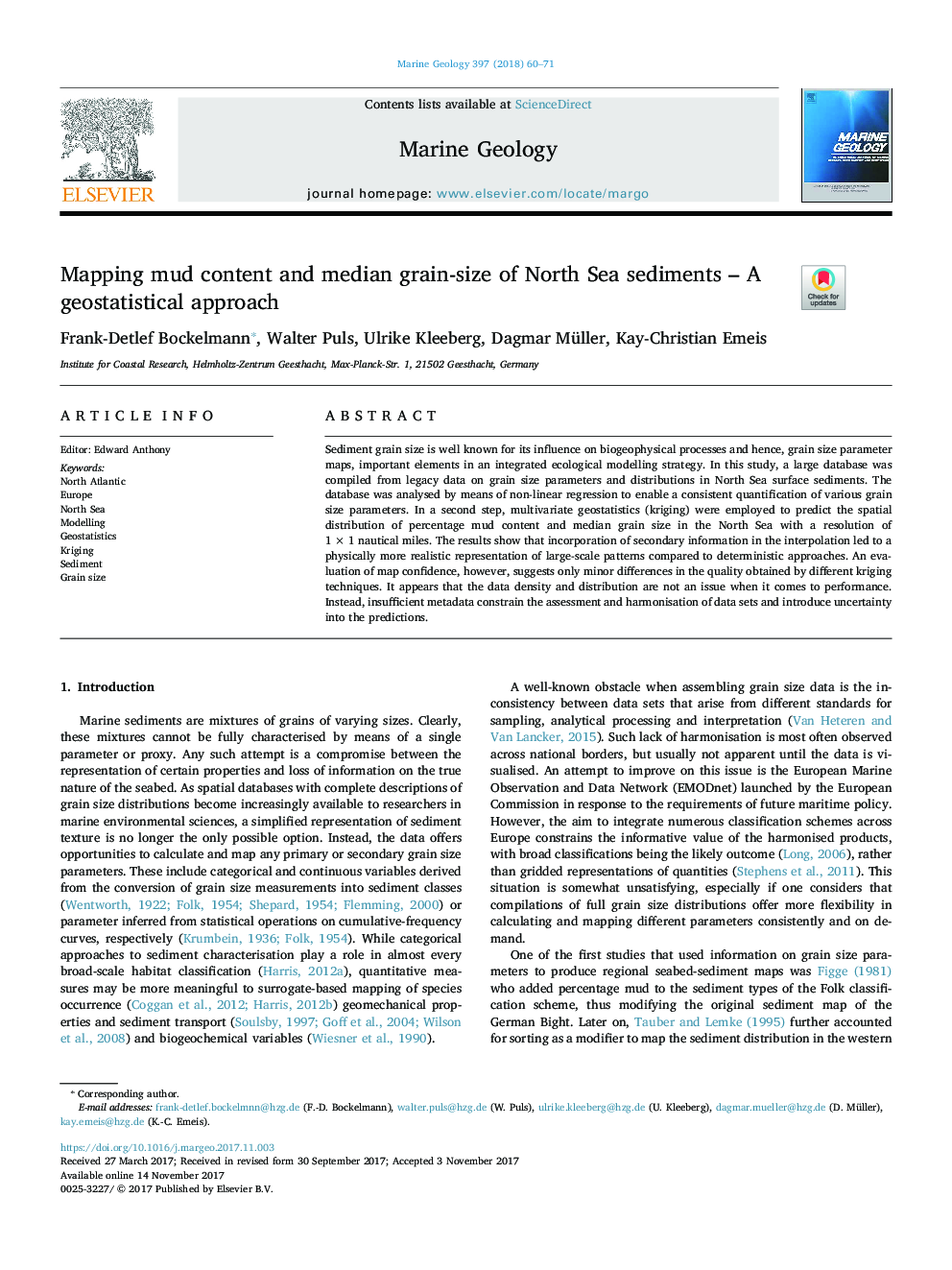| Article ID | Journal | Published Year | Pages | File Type |
|---|---|---|---|---|
| 8912012 | Marine Geology | 2018 | 12 Pages |
Abstract
Sediment grain size is well known for its influence on biogeophysical processes and hence, grain size parameter maps, important elements in an integrated ecological modelling strategy. In this study, a large database was compiled from legacy data on grain size parameters and distributions in North Sea surface sediments. The database was analysed by means of non-linear regression to enable a consistent quantification of various grain size parameters. In a second step, multivariate geostatistics (kriging) were employed to predict the spatial distribution of percentage mud content and median grain size in the North Sea with a resolution of 1Â ÃÂ 1Â nautical miles. The results show that incorporation of secondary information in the interpolation led to a physically more realistic representation of large-scale patterns compared to deterministic approaches. An evaluation of map confidence, however, suggests only minor differences in the quality obtained by different kriging techniques. It appears that the data density and distribution are not an issue when it comes to performance. Instead, insufficient metadata constrain the assessment and harmonisation of data sets and introduce uncertainty into the predictions.
Related Topics
Physical Sciences and Engineering
Earth and Planetary Sciences
Geochemistry and Petrology
Authors
Frank-Detlef Bockelmann, Walter Puls, Ulrike Kleeberg, Dagmar Müller, Kay-Christian Emeis,
